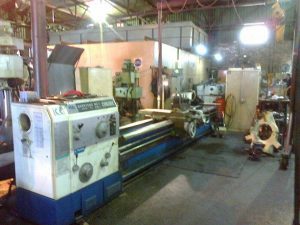Hydraulic Cylinder Design Made Simple
Have you ever wondered how these high powered, heavy duty equipment vehicles work? Vehicles like bulldozers, tractors, cranes and trucks that, push, lift, dump, haul, dig, crush and drill in large scale applications. These vehicles harness enormous power to be able to handle extremely heavy loads. It might surprise you that the main part behind the power are the hydraulic cylinders. . .and they are way more simple than they might seem and don’t even require a lot of energy.
Hydraulic cylinders use the basic principle of fluid under pressure, they are featured in systems that need multiple moving parts all at once. They have been around for quite a while now, since 1970 and they haven’t changed a whole lot when it comes to the design or the function. Sure the tolerances are tighter and the manufacturing processes are much faster now but the classic construction still operates just as well with our new machinery as they did with the old machinery.
 The hydraulic cylinder is composed of four main parts – the casing on the outside, which we call the barrel and more often than not made of stainless steel, the piston which rotates is located on the inside of the cylinder, and the bigger the diameter, or bore, the more power it will harness. The piston is a integral part to hydraulic systems, it gives the cylinders force. The piston is attached to the rod, which is a strong, long piece of steel which is exposed to the fluid path, it must be exceptionally corrosion resistant. It retracts and extends through the gland, which is the very front piece of the cylinder. Then you get the butt, the butt is located at the end or bass of the cylinder and it usually attaches to other hydraulic system components, these include valves, pumps and motors.
The hydraulic cylinder is composed of four main parts – the casing on the outside, which we call the barrel and more often than not made of stainless steel, the piston which rotates is located on the inside of the cylinder, and the bigger the diameter, or bore, the more power it will harness. The piston is a integral part to hydraulic systems, it gives the cylinders force. The piston is attached to the rod, which is a strong, long piece of steel which is exposed to the fluid path, it must be exceptionally corrosion resistant. It retracts and extends through the gland, which is the very front piece of the cylinder. Then you get the butt, the butt is located at the end or bass of the cylinder and it usually attaches to other hydraulic system components, these include valves, pumps and motors.
The oil is kept in a reservoir and whenever the system is active, it is then shot through the cylinder under pressure. This pressure then forces the rod to move back and forth, because the rod is attached t the piston, it then begins to move. The machinery part that is powered by the cylinder will be attached to the piston, enabling it to move. So the movement will start with the liquid, then it is transferred to the rod, then to the piston, and then to the moving part itself.
Today, we make use of two main types of hydraulic cylinders – welded body and tie rod. The tie rod hydraulic cylinders are the ones that have the rods that are attached at both ends of your cylinder. These are much more powerful, and therefore they are used in heavy-duty industrial machinery. The welded hydraulic cylinder doesn’t have a rod, instead it’s attached directly to the item that needs to move. It is missing a huge component which is why welded boyd cylinders tend to be smaller and used for construction equipment like bulldozers or cranes. Telescopic cylinders which are the newer types of cylinders use multiple pistons, offer more flexibility and a wider range of applications. The new versions, however, follow the same basic principles as the classic hydraulic cylinder design.
Contact Sealtec Hydraulics in Vereeniging where we repair and manufacture hydraulic cylinders and systems. We also supply hydraulic seals and accessories.



Sorry, comments are closed for this post.